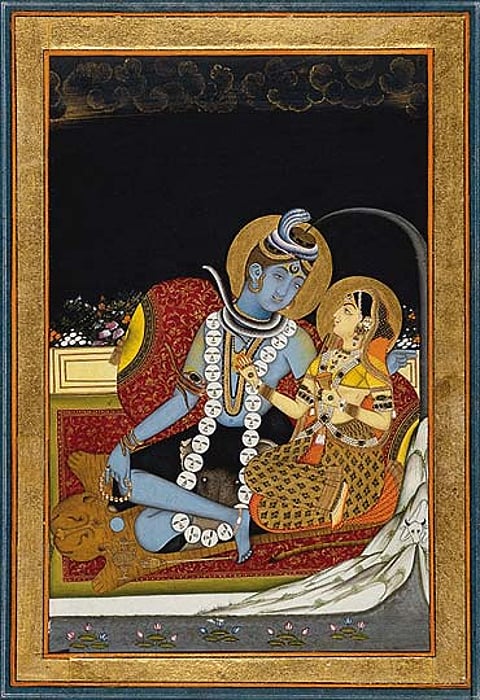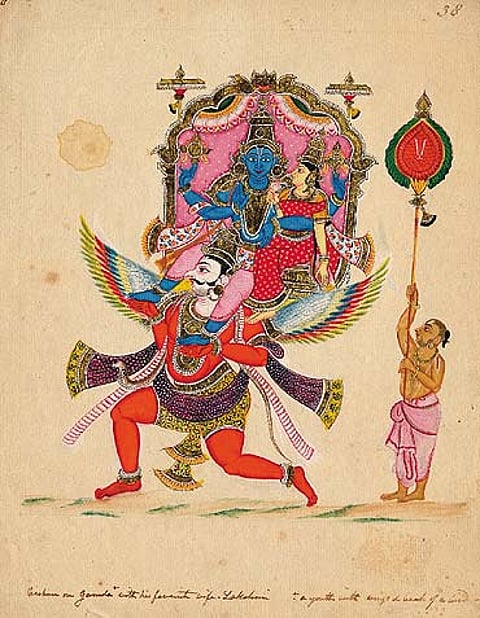Now, with time on his hands in an unfamiliar country he hardly remembered, Moor filled his time by gathering together and organising the artistic, anthropological and textual materials he had been collecting for many years on the deities and images of Hinduism. Five years later, in 1810, he finally published his masterwork, The Hindu Pantheon. Moor's book immediately established itself as the most detailed and accurate attempt yet made by any European scholar to collate and compare the textual and artistic material on Hinduism.
Before Moor, British scholars in India had managed to write some quite amazing nonsense about the Hindus and their religious practices. Sir William Jones, the pioneering Sanskrit translator, for example, correctly believed that the ancient language of the Brahmins was "more perfect than Greek, more copious than Latin, and more exquisitely refined than either" and declared how "the warriors of the Mahabharata appear greater in my eyes than Ajax or Achilles...when I first read the Iliad". Nonetheless, he also passionately believed that the Hindus were a lost tribe of Egypt, while others in Calcutta were equally sure that the Jains were confused descendants of the followers of Pythagoras, and that the three-faced Maheshamurti image of Shiva was somehow a strange Indian representation of the Christian Trinity.
Moor's work was not flawless. Yet, by and large, The Hindu Pantheon—or as its Sanskrit subtitle had it, the Sri Sarva Deva Sabha, the Audience Hall of the Gods—remains even now a remarkably encyclopaedic and accurate guide to Indian mythology. It brought together almost everything that was then known by European intellectuals about the religion of the Hindus, and contained reliable descriptions, images and genealogies of some 2,000 of the major deities.
Moor's work on Hindu deities was not superseded for 80 years and remained in print for over a century; yet today he is remembered less for his scholarship than for the remarkable Indian paintings, miniatures and artworks he commissioned and collected as part of his research. These consisted of over 640 items of Hindu painting and sculpture, with a special emphasis on the varying iconographies of the different deities.


